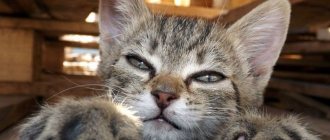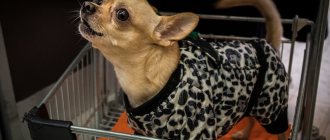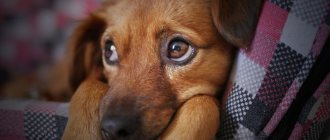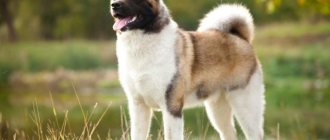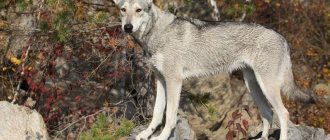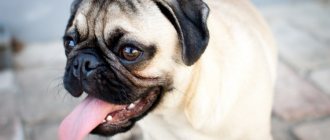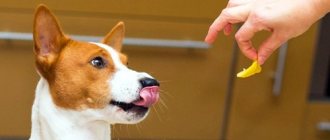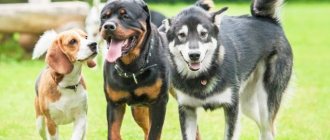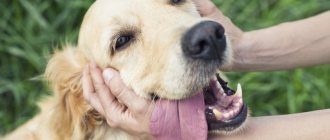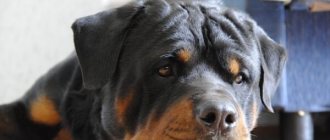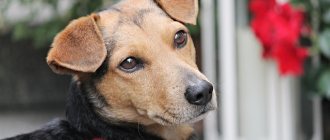The position in which dogs sleep, the way they twitch or move, and the amount of time they spend napping can tell a lot about how they feel.
Sleeping habits can provide clues about your dog's health and happiness that you can interpret if you know what to look for. Of course, if you notice anything unusual or different about your dog's sleep behavior, you should contact your veterinarian for a check.
Here are a few things to look out for when your dog is sleeping and what they might mean.
Sleeping positions
Pay attention to the position in which your dog sleeps most often. Your dog's favorite sleeping position may change depending on where he naps, who he sleeps next to, or how he's feeling.
Injury or soreness can also cause a dog to change his sleeping position, so if you notice anything unusual about your pup's sleeping position, watch for signs of pain. If anything is wrong, contact your veterinarian.
Below are some common sleeping positions and their meanings.
They want honey
Many people buy dogs because they want to give and receive love. By nature, dogs are affectionate animals. Every dog is different, and the amount of affection it craves will depend on socialization, race, history, and other variables. A healthy dog, he has been properly tamed, but often requires attention. With their head on you, they might just want you to give them a pet. This is not only a habit of dogs, but also a great opportunity to express love for our dog...
On the side
A dog that sleeps on its side should feel safe and comfortable as vital organs remain unprotected.
Dogs that prefer this position are usually quite calm and relaxed, although they may switch to a different position if they are sleeping in a new place or with someone they are not familiar with.
This position also allows the limbs to move during sleep, which is why you may see more twitching and kicking from a side-lying dog.
How safe is it for a dog to sleep with its owner?
How to train a dog to stay alone in an apartment
Some owners, explaining why they should not let their dog on the bed, claim that this is harmful for the pet itself. In most cases, all the harm from sleeping together comes down to the fact that the owner may accidentally lie on the animal, crushing it, or throw it to the floor. In this case, there is a risk of injuring the dog.
However, according to other criteria, being in the bedroom with the owner cannot be called dangerous. On the contrary, it improves the dog’s sleep quality, gives it a feeling of security, and strengthens its relationship with the person.
Curled up
A very common sleeping position for dogs is to curl up nose to tail. This is a common position for animals in the wild, as it protects vital organs, helps retain heat, and makes it easy to get up quickly.
This position limits movement during sleep, so you may see less twitching as your dog snoozes in a ball.
You might think that a dog who sleeps in this position would be uncomfortable in their environment, and while this may be the case, this is not necessarily the case. This is a common position during the fall and winter months when the weather is cooler, or a particular dog may simply find it easier to sleep in this position.
What to do?
To become the “leader” of your pack once and for all and not lose control of your puppy, you must adhere to several rules:
- Prohibit your dog from sleeping anywhere except in its bed, basket or bedding;
- Accustom the animal to the fact that she will receive her portion of food after everyone has eaten;
- All games must be controlled by a person, not allowing the dog to win;
- The dog should enter the house after the person;
- From a young age, teach your puppy to obey through commands.
Stretched out on your stomach.
This is sometimes called the "Superman" pose. This allows the dog to jump out and be on his paws immediately.
You often see this position in puppies who need to take frequent naps, but also want to be ready to jump up and play at a moment's notice.
Dogs who sleep in this position don't want to miss out on the chance to get in on the action, even while they're dozing. This is the preferred position for high-energy puppies or puppies that fall asleep while playing and just want to plop down on the ground.
On your back, paws up.
Just as curling in a ball keeps your dog warm, sleeping with its belly exposed helps your dog cool down. Since the fur around the belly is thinner and the paws contain sweat glands, exposing these areas is a great way to cope with the heat.
This is also a position that indicates that the dog is very comfortable, which makes his most sensitive areas vulnerable and makes it difficult for him to get to his feet quickly.
A puppy who sleeps in this position likely doesn't have a care in the world. This is a common occurrence during the summer months.
Back to back or pressed up
You may find your dog sleeping with his back to your other pets or cuddled up to you, and this means the same thing. Your dog becomes attached and shows that he wants to bond with you or his furry siblings.
A dog sleeping this way feels very loving and affectionate and is completely comfortable with whoever he is napping with.
Try showing your love in return by taking a nap with your pup.
Sleepy behavior - the dog is dozing
When your dog naps, you can get an idea of the quality of his sleep by his behavior.
Sleep is important for the body's healing and repair, and REM sleep, which is the deepest stage of sleep, is the most restorative.
Pay attention to these signs and behaviors to make sure your dog is getting the best sleep possible.
Take my raincoat please
Are we, with our love of anthropomorphism, also mistaken about dogs? Yes. Take four-sleeve dog clothes for example. Many dog owners have noticed that their pets are reluctant to go outside in bad weather, and have concluded: dogs do not like rain.
What does it mean? The dog probably doesn't like being wet by the rain, just like we don't like it. But is this true? Is your dog excited and wagging its tail when you take the raincoat out of the closet? Don’t rush to celebrate: maybe she just understands that the appearance of a raincoat heralds a long-awaited walk. Does your dog squirm, tuck its tail, and twist its head when you put a raincoat on it? This discourages you, but you are in no hurry to doubt that you are right. What does a dog look like when he gets wet? Is he dirty? And at the same time he shakes himself off with delight? Unclear.
The natural behavior of wild canids may help answer the question of what exactly a dog thinks about a raincoat. Both dogs and wolves have a “raincoat”, which is an integral part of the animal - wool. It is quite enough; when it starts to rain, wolves seek shelter rather than try to build an improvised raincoat.
In addition, dog clothing tightly fits the back, chest, and sometimes the head of the animal. The wolf experiences pressure on these parts of the body when another wolf asserts its power over it or an older relative “punishes” it for disobedience. Dominant individuals often pin subordinates to the ground, grasping their muzzle with their jaws. This is called educational nipping, and may be why muzzled dogs appear unusually submissive.
A dog that pins its fellow dog to the ground is a dominant dog, and a subordinate dog in such a case experiences inevitable pressure. This is probably what the raincoat evokes. Therefore, the main feeling that a dog experiences when wearing a raincoat is not protection from moisture. Rather, the raincoat gives her the confidence that a higher-ranking individual is nearby. A dog dressed in a raincoat may obediently go outside, but not because it likes wearing it, but because it has been forced into a subordinate role. Of course, in the end she won't get wet, but that's our concern, not the dog's.
To avoid this kind of mistake, you need not to “humanize” the dog, but to correctly interpret its behavior. In most cases, everything is simple: the owner must ask the dog what it wants. You just need to know how to translate the answer.
Circling and digging
Dogs usually circle their sleeping area or even do a little digging before bed.
This behavior came from the ancestors of wolf dogs, who often trampled grass, leaves or snow to get comfortable. They can also dig a hole to help them stay warm in the winter or cool in the summer.
Dogs typically do a few laps before they lie down, but if they do this too much or are having trouble adjusting, it could be a sign of pain, arthritis, or a neurological problem. Consult your veterinarian if you notice excessive circling.
Light nap
A dog may nap during the day if it is bored or just resting. This is not a very restful sleep, and your dog may simply be waiting for something more interesting.
Keep an eye on your puppy's ears and see if they perk up with any movement or unusual noise. This probably means your dog is still quite alert and looking for something worth getting up for.
Maybe it's time to do something fun like go for a walk or play shopping.
Twitching, wagging, or soft barking.
Dogs tend to move around a bit during REM sleep, when they are at their calmest. They may be very good at acting out their dreams, but they will get good, deep sleep.
Twitching, tail wagging, kicking and occasional barking or growling are common. This is a good time to let sleeping dogs lie down, as this period of sleep is very restorative and good for their health.
Movement during sleep is actually more common in puppies and older dogs, and no one can explain why.
A less common cause of sleep twitching is a cold dog. Twitching is a way of warming up the body. If your dog is cold, grab a blanket or move him to a warmer sleeping area.
Dog "kisses"
For Pumpernickel, kissing is a way of establishing contact; so to speak, a hand extended to me.
Pumpernickel licks my face when I get home and lean over to caress her. She licks my hand to wake me up when I start to doze off in the chair. She carefully licks my sweaty feet after running. Sitting next to me, Pumpernickel presses my hand with his front paw, unclenches his fist with his nose and licks my palm. I am delighted.
I often hear dog owners testify to their pet's love through the "kisses" their dogs give them upon returning home, be it slobbery "kisses" on the face or thoughtful "polishing" of a hand with the tongue.
I consider Pumpernickel kisses to be a sign of affection. “Affection” and “love” are not recent inventions of our society, which considers dogs to be little people who should be dressed up in bad weather, pampered with trips to the resort and dressed up for Halloween. Charles Darwin, who lived long before the establishment of the “dog nursery” (who, I am sure, did not dress his puppy in a goblin or witch costume), wrote about dog “kisses” without doubting their significance. Dogs, according to Darwin, demonstrate their affection in an amazing way, namely by licking the hands or face of the owner. Was Darwin right? Dog “kisses” seem like a sign of love to me, but what does the dog himself think about it?
I have bad news for you. Observations of wolves, coyotes, and foxes have shown: puppies lick the face of their mother returning from hunting and demand that she regurgitate half-digested food. Licking around the mouth apparently stimulates the mother to do this. How disappointed Pumpernickel must be that I never shared the rabbit I ate with her!
However, dogs enjoy licking our faces. Their taste buds recognize salty and sweet, bitter and sour, and even the umami taste found in MSG. Dogs sense sweet tastes a little differently than we do (for us, salt enhances the sensation of sweetness).
Dogs have a particularly large number of “sweet” receptors, although, for example, sucrose and fructose have a stronger effect on them than glucose. Omnivorous dogs must have evolved this ability to distinguish between mature and immature plants and fruits. It is curious that even pure salt does not stimulate the so-called “salt” receptors on the tongue and palate of dogs in the same way as it does in humans. But you don’t have to puzzle over Pumpernickel’s behavior for long to understand that her “kisses” are often connected to the fact that I recently devoured a fair amount of food in front of her eyes.
Now for the good news: over time, pragmatic licking (what we call dog “kisses”) has evolved into a greeting ritual. In other words, it serves not only as a way to beg for food, but also to say hello. Dogs, as well as wolves, lick each other’s faces to congratulate each other on their return and to determine by smell where their relatives went and why. Mothers not only wash their puppies by licking them, but when they return after a short separation, they give them a few quick “kisses.” A young or timid dog may lick the face of a large, intimidating dog to appease him. Familiar dogs can decorously exchange “kisses” while walking on a leash.
The “kiss” also serves as a way to make sure (through smell) that the dog rushing towards you is really familiar. And since greeting "kisses" are often accompanied by wagging tails, open mouths and general excitement, it's not too much of a stretch to say that licking is a way of expressing delight at being back home.
Advertising
An American psychology professor suggests forgetting everything we know about dogs and switching to their point of view. Our communication with our pet will benefit from this. To make it easier to mentally transform into a four-legged animal, an animal behavior specialist simultaneously “gets into the skin” of a broiler chicken and a tick.
Pumpernickel wakes me up in the morning. She comes up to my bed and starts sniffing energetically: her nose is a few millimeters from my face, her mustache tickles my lips. She wants to know if I'm awake, if I'm alive... and if it's even me. To top it off, Pumpernickel expressively sneezes right in my face. I open my eyes and she's looking at me, smiling and huffing in greeting.
Look at your dog. Perhaps she is now lying nearby, on the mat, curled up with her muzzle on her paws, or lounging on the tiled floor, twitching her paws in her sleep. Of course, I don't demand that you immediately forget your dog's name, favorite treat, or unique appearance, not to mention everything else. This is like asking a person who is trying to meditate for the first time to achieve instant enlightenment.
If we look at dogs from a scientific point of view, we will see that some of our information about them is completely inaccurate; some things that seemed infallibly true turn out to be doubtful upon closer examination. And if we look at our dogs from a different point of view - from the point of view of a dog - then we will notice nuances that people usually do not think about. Therefore, the best way to begin to understand canine nature is to forget what we think we know about it.
The first thing you should part with is anthropomorphism, the assimilation of animals to humans. We see, evaluate and try to predict the dog's behavior from a biased, human point of view, giving it our own traits. Well, of course, dogs love and lust, think and dream; they know and understand us, and they also get bored, jealous and depressed. If a dog looks at us painfully when we leave the house for the whole day, then the first thing that will come to our mind is that he is sad.
Anthropomorphism is not exactly unacceptable. It arose when people began to comprehend the world. Our ancestors constantly resorted to this technique to explain and predict the behavior of the animals they hunted and those that in turn hunted them. Imagine meeting a fire-eyed jaguar in the darkness of the forest; you look deep into his eyes and perhaps think, “If I were a jaguar...”. And - you run away from the wild cat as fast as you can. People survived: apparently, anthropomorphism turned out to be quite true.
Now, as a rule, we do not find ourselves in the position of a victim who, in order to escape from a jaguar, must imagine what he wants. Instead, we bring animals into our home and invite them to become members of the family. In this case, anthropomorphism does not help us at all to build smooth and emotionally rich relationships with animals. I don't mean to say that anthropomorphic judgments are always false: the dog may indeed be sad, jealous, curious, and depressed—but maybe he's just asking for a peanut butter sandwich.
We may consider an animal happy if we see that the corners of its mouth are raised - and, most likely, we will be mistaken. Dolphins, for example, “smile” all the time; this is an unchanging feature of their appearance, like a grimace drawn on the face of a clown. A chimpanzee's grin indicates fear or expresses submission - both are very far from joy. The raised eyebrows of a capuchin monkey do not mean that she is surprised, doubtful or alarmed: she makes it clear to her relatives that she has friendly intentions. In baboons, on the contrary, raised eyebrows can mean a threat (so watch your facial expressions in the presence of monkeys). People will have to confirm or deny what we attribute to animals.
Advertising
When we think we know what is best for the animal (based on what is best for us), we may unintentionally conflict with our own goals. In recent years, people have become concerned about the welfare of animals raised for slaughter, such as broiler chickens, and decided that it would be better if the birds could get out of their cages and stretch their wings.
But do broilers want freedom? According to popular belief, no creature, be it human or animal, likes being cramped. (In fact, if you have to choose between a subway car filled to overflowing with sweaty, nervous people, and a car with few people, you, of course, will prefer the second option - unless, of course, the air conditioning in this car is broken or, say, there is no exclusively foul-smelling passenger riding there.) The natural behavior of chickens, however, indicates the opposite. They flock together and do not wander on their own.
Biologists conducted a simple experiment to identify the preferences of chickens: they selected a few, put them in a cage and began to observe them. Most of the chickens huddled together with their relatives rather than walking around, even if there was free space in the cage. In other words, broilers prefer a crowded car to an empty one.
I don't mean to imply that chickens like to live in cramped spaces. It is inhumane to cage so many chickens that they cannot move. However, the assumption that our preferences match those of the chickens is not enough to assume that we know what they want. Chickens at the poultry farm are killed when they reach the age of one and a half months. Poultry at this age are still under the care of the hen. Broilers, deprived of the opportunity to hide under their mother's wing, stay close to each other.
Signs of distress
Just like people, dogs can have nightmares.
If your dog seems particularly agitated during sleep due to more movement, barking or whining than usual, you can try to gently calm your puppy. Call their name gently and stroke their back or sides. Use soothing tones.
Your puppy may wake up or simply relax and continue into a more pleasant sleep after you calm him down.
If you notice that your dog often seems agitated while sleeping, you may want to schedule a visit to the vet just in case.
Quenching the itch
There's nothing more annoying than an itch that you can't scratch. Sometimes dogs roll onto their backs to relieve back itching. This is why you may see your dog spinning wildly upside down. They can't ask you to scratch them, so this may be their only way to get relief.
Dogs often do this on carpeting because it has a rougher texture than hardwood or other floor surfaces. They may also collapse on one of their toys to stop the incessant itching.
Seizures
When the twitching becomes excessive, it may be a sign of a seizure that requires immediate medical attention.
Try calling your dog by name and waking him up if you suspect his movements are abnormal. If they wake up, it might have been a bad dream.
If they do not answer your calls, continue to shake, or are stiff, seek medical attention immediately.
You should pay attention to your dog's normal sleep habits so you know the difference and can tell when something is out of the ordinary.
You might get scratched
The husband checked on a hidden camera how his wife was sitting with the children: now they do not communicate
The bride, having kissed her father, put something in his hand: he showed everyone the “present”
Baking powder against mosquito bites and other uses
Cat scratch disease is a serious disease that you can get if you are scratched by a cat that has fleas on it. This condition will make you feel very unwell and can also have negative effects on your liver, spleen and kidneys.
